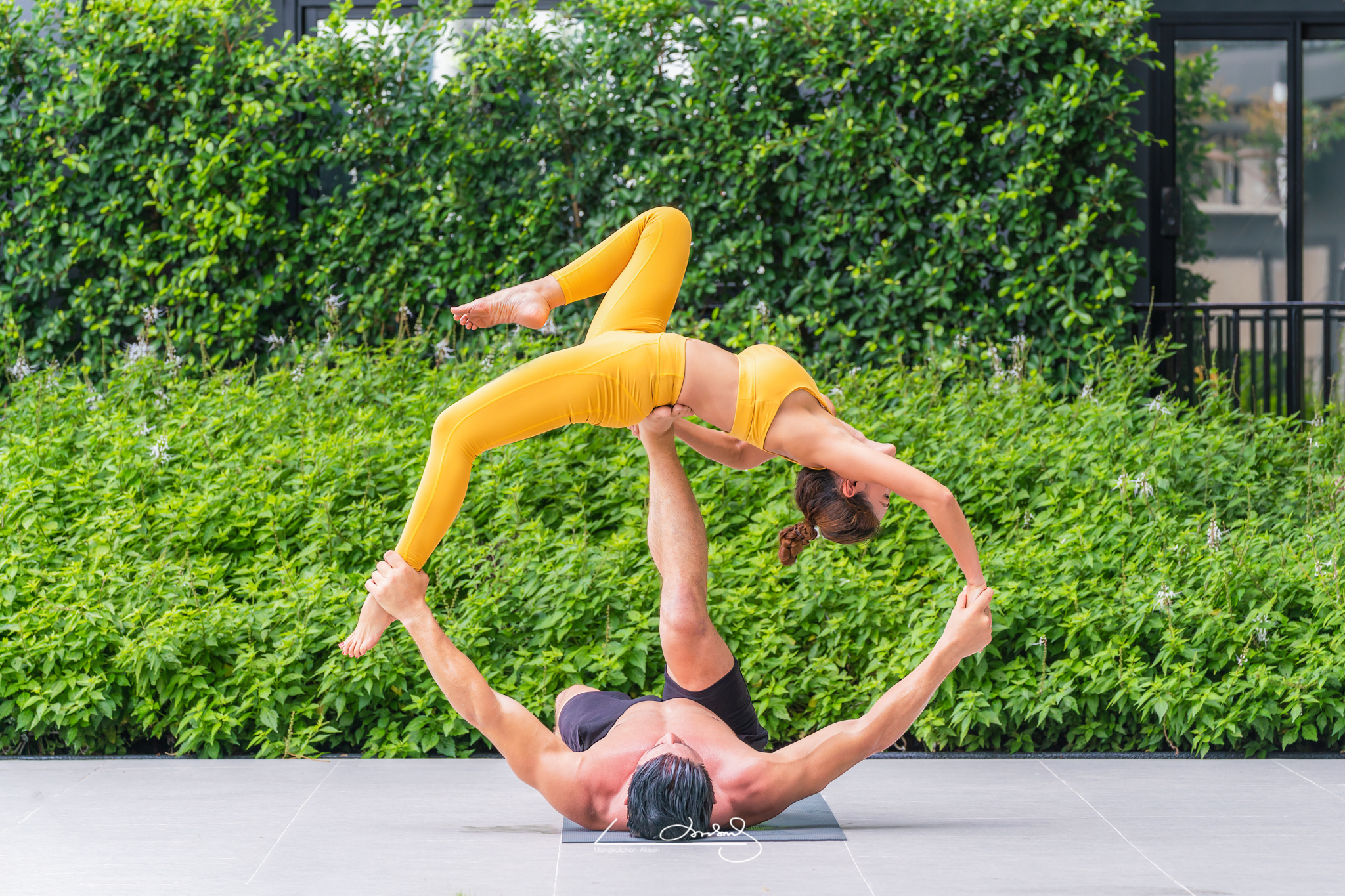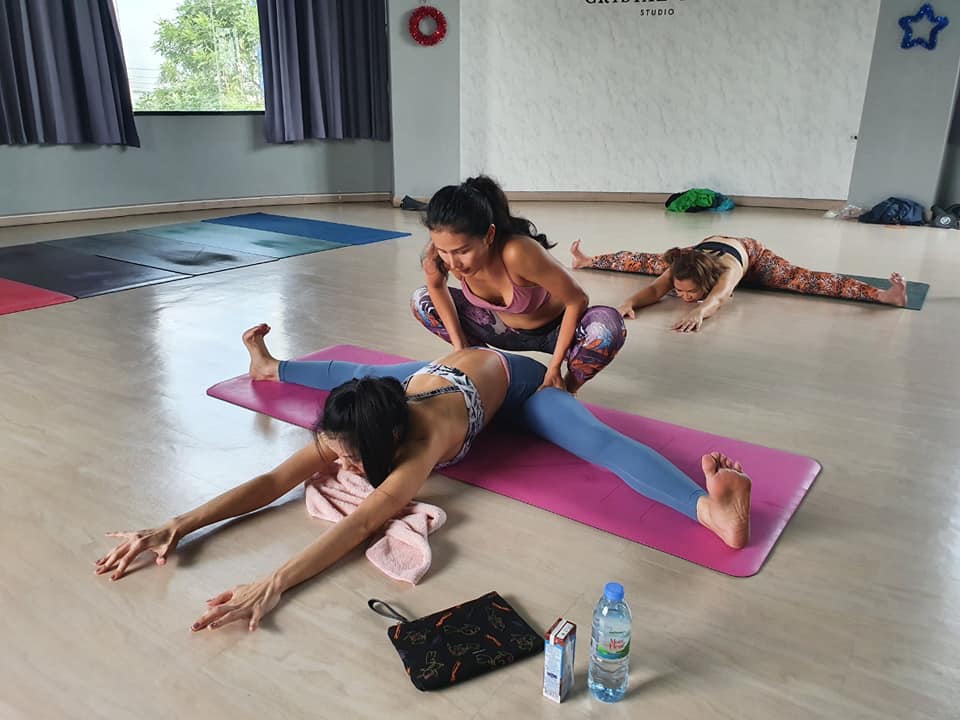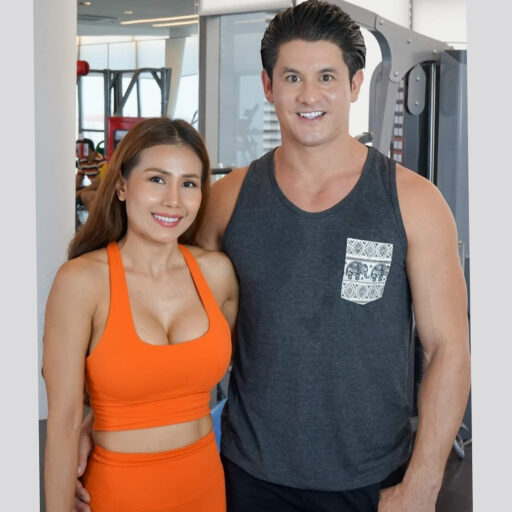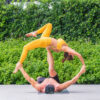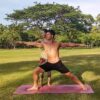Yoga for Rehab
Yoga for Rehab is a remarkable therapeutic complement to conventional methods of treating injury and can help you rehabilitate an injury, relieve pain, and get back in action. Now I’m not a doctor, and I can’t promise yoga will cure every ailment you may be experiencing, but there is significant medical evidence indicating that yoga for rehab can assist with and even increase recovery rates and mobility, as well as improve patients overall emotional and physical well-being.
Yoga is fundamentally different from conventional medicine in its approach to injury. Rather than attempt to isolate the cause of an injury to a single factor and to correct it using a specific cure, yoga for rehab aims to treat the injury by working with the body’s natural healing systems and improving health on all levels. Asanas, or yoga movements, relax and strengthen muscles and massage internal organs; pranayama, or focused breathing, delivers oxygenated blood to injured areas; and relaxation and meditation calm the mind and reduce pain in the form of tension.
โยคะสำหรับทำกายภาพบำบัด
โยคะเพื่อการบำบัดเป็นส่
โยคะนั้นมีความแตกต่างจากยาทั่
Understanding Yoga and Physical Therapy
The physical aspects of yoga for rehab represent only two of eight components of the comprehensive practice of yoga. The first component, or “asanas,” refers to physical movements and postures. Some of the names of these movements and postures have entered the mainstream vocabulary and many are now familiar with the terms “downward-facing dog” and the “lotus” position. The second component, “pranayamas,” refers to breathing techniques. The timing and coordination of breathing when holding or moving in and out of postures serve to link the mind and body. Therefore, as an added benefit, yoga may also produce a sense of well-being and renewed energy.
Physical therapists have only recently begun to embrace the postures and breathing techniques used in this ancient practice. Physical therapists have advanced education and training in human anatomy, human physiology, and the movement sciences. They are uniquely qualified to assess and identify deviations from normal movement and changes in physical performance which have developed as a result of an illness or injury. The underlying causes of movement dysfunction are vast and usually involve an interruption of the delicate interaction between the musculoskeletal, neurological, and cardiorespiratory systems of the body.
Yoga Teachers and Physical therapists often must adapt traditional yoga for rehab techniques according to the person’s age, body type, physical status, and disease process. The high demands of many of the movements and postures may be divided into parts of the whole activity so the patient can still receive the benefits at a modified level. Standing postures may be adapted for sitting, or single-leg standing postures may be initially performed with both feet on the ground.
understand about
The physical characteristics of yoga for
Physical therapists are just starting to use it.
Yoga teacher and physical therapist
The 8 Stages of Classic Yoga
A scholar named Patanjali, writing in the 1st or 2nd century, compiled the prevalent yoga theories and practices of his time in the Yoga Sutras. This text forms the foundation for many types of modern yoga, and the ideas in this text are often taught before, during, and after yoga for rehab classes. There are eight important parts of yoga(Eight limbs of yoga)
- Yama: Refraining from violence, stealing, casual sex, lying or hoarding
- Niyama: Purity, contentment, remembrance, and study
- Asana: Physical exercises
- Pranayama: Breathing techniques
- Pratyahara: Preparing for meditation
- Dharana: Concentration
- Dhyana: Meditation
- Samadhi: Realization of the essential nature of the self
By learning and mastering these steps, you might learn more about how to calm your mind, keep your body healthy, and keep a relapse from occurring.
8 basic steps of yoga (Way of Yoga, Eightfold Path of Yoga)
The father of yoga, Patanjali (Patanchari), wrote in the 1st or 2nd century, compiling the theories and practices of yoga.
- Yama: Solving problems without
violence, not stealing, not telling lies, behaving in a realistic way, and not taking material possessions beyond necessity. - Niyama (Niyama) personal observances, discipline or 5 practices, including patience and tolerance. being satisfied with what one has Purification of the mind and body self-education, learning yoga and being humble Have faith in the yoga you are practicing
. - Asana (Asana) Body postures are exercise postures. or body care to create a balance between
body and mind - Pranayama Breathing exercises are the practice of controlling the breath. to control the autonomic nervous system, calming the mind
- Pratyahara: Control of senses is organic consciousness. When the body is still and the breath is calm, then practice controlling your senses. which often fluctuates according to stimuli or influences from the
external environment. Controlling the 5 senses: eyes, ears, nose, tongue, and body. - Dharana (Concentration & Cultivation) or concentrating, when the body is calm and the mood stable, then the mind training begins. which has the nature of non-stop,
still mind is effective mind Able to get work done - Dhyana (Dhyana) Devotion: constant training of the mind. Makes the mind have a higher quality, able to focus on any subject.
Just one story A powerful mind, fit for work. - Samadhi (Samadhi) Union with the Universe is the highest result obtained from practicing
yoga. The concentrated mind of yoga. It is a mind that is one. Have determination
By learning and mastering
Yoga’s Role in Rehab
With professional instruction and a commitment to ongoing practice, yoga has been shown to rehabilitate torn muscles, broken bones, and a variety of other bodily injuries. But keep in mind that yoga can sometimes make injuries worse. Always talk to your doctor to be sure you understand the nature and extent of the damage — and discuss rehabilitation methods and treatments, including how yoga can be applied in concert with other rehab approaches. Yoga for rehab should only be used only under the guidance of a yoga instructor trained specifically in the process of injury rehabilitation.
Our body has intrinsic methods of healing itself after an injury and yoga can help stimulate the body’s natural healing processes. It rushes nurturing blood to injured areas, it produces antibodies to fight infection, and it produces pain-relieving endorphins, to name just a few.
One important way yoga for rehab helps heal the body after an injury is by supporting these natural defenses. The gentle movements of yoga encourage deeper breathing and boost circulation, helping the blood do its work more effectively and increasing the amount of oxygen in the blood.
The role of yoga in therapy
with professional teaching
Our body has ways to heal.
one important way
How Yoga Poses Help Your Body
Yoga for rehab movements, or asanas, are the roots of the healing process and specific ones can be used to target different body parts and muscle groups. The asanas are capable of exercising every muscle, nerve, and gland in the body as you stretch and move in repetitive full-body motion.
Yoga asanas strengthen muscles and help make bones healthier. They invigorate organs, helping keep the body free from disease by strengthening the immune system. In addition, the smooth, repetitive movements of yoga increase circulation and lung capacity, drain the lymphatic system, and stimulate glands. Specific asanas can be modified to treat a variety of injuries with the health affirming effects of gentle, repetitive motion. For many decades, inactivity was the solution for most injuries. Now, as we better understand how the body heals, we have learned to support the natural healing process with gentle movements. Great news for people trying to stay healthy on the job.
Research definitively shows that yoga has positive health effects. It is important to note that yoga can be beneficial at all different levels of intensity. Although yoga may be seen in an outsider’s eye as contortionist-like poses, that is only an extreme end of the spectrum of possibilities.
Yoga is an all-welcoming practice for persons of different shapes, sizes, and ranges of ability. Instruction on yoga for rehab postures can be tailored to those with no history of structured exercise to athletes who have made fitness integral to their livelihoods. As positive health benefits are available to anyone who practices yoga, it is helpful to know what research says about the advantages of yoga.
As there have been various research studies on the benefits of yoga in different contexts, it is helpful to summarize the general findings. According to a host of studies, the practice of yoga has been show to:
- Relieve anxiety
- Lower blood pressure
- Improve circulation
- Decrease the risk of heart disease
- Improve lung function
- Improve working memory
- Help weight loss
- Increase brain function
The American Osteopathic Association highlights the close association between yoga practice and reduced stress. Stress can manifest in myriad ways, including neck ache, back pain, sleep troubles, poor concentration, and drug abuse. Yoga for rehab can potentially address these health conditions as it takes a combined mind, body, and spirit approach to heal.
ท่าโยคะจะช่วยร่างกายคุณได้อย่
โยคะสำหรับการเคลื่
asanas โยคะเสริมสร้างกล้ามเนื้อและช่
การวิจัยแสดงให้เห็นอย่างชั
โยคะเป็นแบบฝึกหัดที่น่ายินดี
เนื่องจากมีการศึกษาวิจัยต่าง ๆ เกี่ยวกับประโยชน์ของโยคะในบริ
- บรรเทาความวิตกกังวล
- ลดความดันโลหิต
- ปรับปรุงการไหลเวียน
- ลดความเสี่ยงของโรคหัวใจ
- ปรับปรุงการทำงานของปอด
- ปรับปรุงหน่วยความจำในการทำงาน
- ช่วยลดน้ำหนัก
- เพิ่มการทำงานของสมอง
American Osteopathic Association เน้นความสัมพันธ์ที่ใกล้ชิ
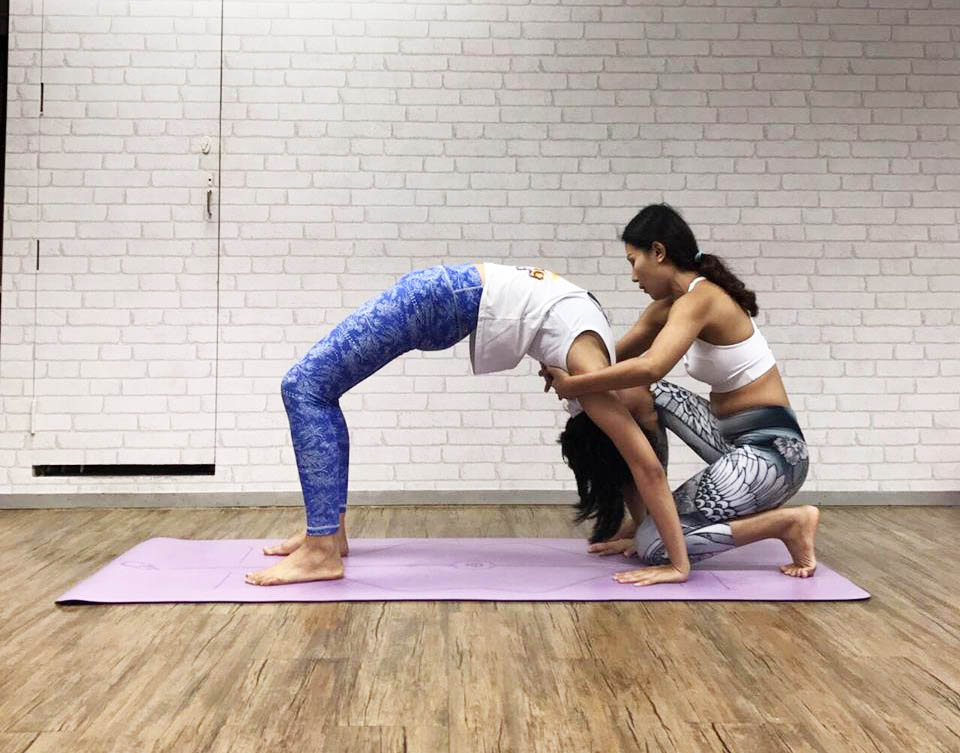 Yoga and Pain Management
Yoga and Pain Management
Yoga for rehab exercises and concentration techniques also serve to reduce the pain and unremitting stress associated with chronic pain from some injuries. In fact, yoga is one way that the body’s production of endorphins can be increased to help reduce pain naturally. Exercise, breathing, relaxation, and meditation stimulate the body to produce endorphins, distract the mind from pain, and reduce tension in muscles formed in reaction to pain. With yoga, sufferers of chronic pain find they can “move through” the pain instead of resisting it.
Yoga postures also reduce the pain of injury by warming, relaxing, and stretching muscles. The combination of warmer and more flexible muscles decreases joint and ligament tension, which reduces muscle pain. Usually, some of the pain we feel from injuries is the natural result of constricted muscles. Yoga for rehab can reduce the pain of muscle injury by gently stretching muscles and freeing constrictions.
การจัดการโยคะและความเจ็บปวด
โยคะสำหรับการทำกายภาพบำบั
ท่าโยคะยังช่วยลดความเจ็
The Rehabilitation Process
To enable yoga for rehab to have a positive and meaningful impact, it’s necessary to find a qualified Yoga instructor and make a commitment to a consistent yoga practice.
A serious commitment to a daily practice of yoga is necessary to enable the postures to impact the healing process. Some types of yoga, including Ashtanga and Bikram, promote a strict order and repetition of yoga for rehab focused lessons. Repeating the same movements in the same order develops
กระบวนการฟื้นฟูสมรรถภาพ
เพื่อให้โยคะสำหรับการฟื้นฟูมี
ความมุ่งมั่นอย่างจริงจังต่
Staying Safe in Yoga
While yoga is considered safe for many people, there are some things you can do to stay safe in yoga for rehab lesson:
- Get clearance from your doctor. Some medical conditions can make it difficult for you to participate fully in yoga.
- Tell your teacher about your injuries, if any.
- Take a class appropriate for your skill level. If you’ve taken yoga before, an intermediate or advanced class might be appropriate for you. But if not, stick with beginner courses.
- Wear clothing that allows you to move freely. Baggy, binding clothing might cause you to trip or injure yourself.
- Warm-up with stretches before you begin.
- Ask questions about poses you don’t understand.
- Don’t force your body into painful positions. Know your limits.
- Drink plenty of water.
อยู่อย่างปลอดภัยในโยคะ
ในขณะที่โยคะถือว่าปลอดภัยสำหรั
- รับการปรึกษาจากแพทย์ของคุณก่
อนเสมอ เงื่อนไขทางการแพทย์บางอย่ างอาจทำให้คุณมีส่วนร่ วมในโยคะได้ยาก - บอกครูสอนโยคะเกี่ยวกั
บการบาดเจ็บของคุณถ้ามี
เข้าชั้นเรียนที่เหมาะสมกับระดับความสามารถของคุณ หากคุณเคยฝึกโยคะมาก่ อนคลาสกลางหรือขั้นสู งอาจเหมาะสมสำหรับคุณ แต่ถ้าไม่ติดกับหลักสูตรเริ่มต้ น - สวมใส่เสื้อผ้าที่ให้คุณเคลื่
อนไหวได้อย่างอิสระและสบาย - หลีกเลี่ยงเสื้อผ้าที่ผูกติดกั
บกระเป๋าอาจทำให้คุณต้องเคลื่ อนไหวลำบาก - อุ่นเครื่องด้วยเหยียดก่อนเริ่ม
- ถามคำถามเกี่ยวกับการโพสท่าที่
คุณไม่เข้าใจ - อย่าฝืนร่างกายของคุณให้อยู่
ในตำแหน่งที่เจ็บปวด - รู้ข้อ จำกัด ของคุณ
- ดื่มน้ำปริมาณมาก
Why Do I Need A Private Yoga Instructor?
Are you interested in starting a consistent yoga practice, but not sure where to start? Maybe you’re self-conscious about your lack of experience or level of physical fitness? or perhaps you’re like many people in Bangkok who just don’t have the time to go to a yoga studio after a busy day at work and would prefer a private personal lesson at home or somewhere more convenient.
No matter what your reasons are, there are countless benefits to having your own personal yoga instructor. Unlike basic classes, private lessons are a one on one experience with an instructor. In private lessons, I like to help bring about improvements to one’s mental and physical health so you can achieve personal yoga or fitness goals.
ทำไมฉันต้องการครูสอนโยคะส่วนตั
หากคุณสนใจที่จะเริ่มฝึกโยคะอย่
แตกต่างจากคลาสพื้นฐานการเรี
Some Other Private Yoga Instructor Benefits:
- Dedicated 1-0n-1 Training
- Sessions customized to your needs
- Gain Initial Experience
- Focus on your Personal Goals
- Create a Yoga Routine
- Overcome health concerns
- Work on In-depth Training
- Many other benefits…
ประโยชน์ของผู้สอนโยคะส่วนตัวอื่
- การฝึกอบรมเฉพาะแบบตัวต่อ
- จัดปรับร่างกายแต่ละท่
าอาสนะในแบบตามความต้องการของร่ างกายคุณ - รับประสบการณ์ครั้งแรก
- มุ่งเน้นไปที่เป้าหมายส่วนตั
วของคุณ - สร้างกิจวัตรโยคะ
- เอาชนะปัญหาสุขภาพ
- ฝึกอบรมเชิงลึก
- ประโยชน์อื่น ๆ อีกมากมาย …
Why is Yoga Important to Me?
What I enjoy the most about yoga are my students and other yoga friends. When you do yoga it is not only for the selfish desire to be more fit or to relieve stress but also to make new friends. You can travel the world and make a connection with others instantly by finding a place to practice yoga. I am passionate about practicing yoga and often wake up very early so I can go through some series on my own every morning.
I also like to continue learning and testing myself by doing Ashtanga yoga at some of my favorite studios like AYBKK or Ashtanga Yoga Bangkok. Yoga is important because it combines important positive physical and philosophical ideas that benefit our mind, body, and soul for a better life.
ทำไมโยคะถึงสำคัญกับฉัน
สิ่งที่ฉันสนุกกับโยคะมากที่สุ
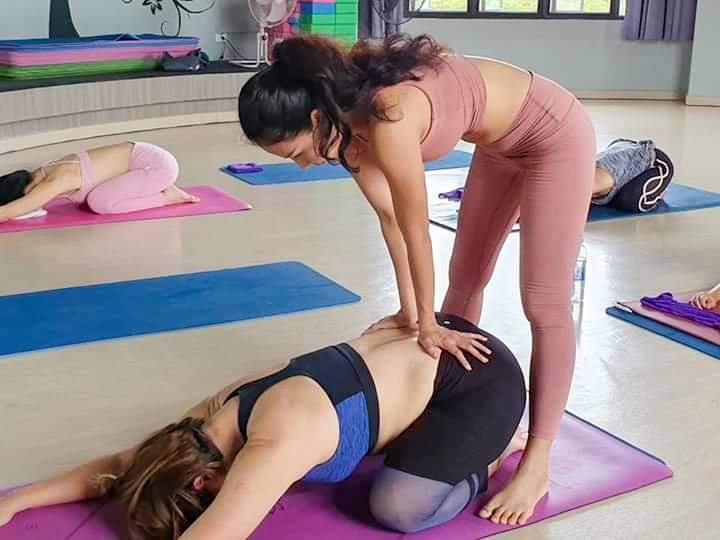 “Get in touch with their own intuition. The answers are inside if we have a process to be introspective.” ~ Dr. Herby Bell
“Get in touch with their own intuition. The answers are inside if we have a process to be introspective.” ~ Dr. Herby Bell
Yoga Lessons at Home
Don’t worry about having to travel anywhere after work or on your day off when Krujanie will deliver your private lesson straight to your door. With my hands-on custom style, you will get a fully personalized experience catering to your needs and skill level. So don’t let traffic congestion or the weather get in the way of your goals when you can have your own private yoga lesson in the comfort and privacy of your own home.
All you need to do is schedule an appointment and then be available and ready to enjoy a private lesson to expand both your body and your mind.
เรียนโยคะแบบส่วนตัวที่บ้าน
คลาสโยคะดิลิเวอรี่ มีคุณครูโยคะใจดี เต็มไปด้วยประสบการณ์ในการสอน เดินทางไปสอนโยคะแบบส่วนตัวให้
Yoga Services
I provide my Yoga services throughout the Bangkok Metropolitan area with my ideal client living in or around Sathon but am willing to travel as far as Watthana or most places within reason. My hours of availability are pretty open and flexible around other appointments and my group yoga levels at various studios in the area.
Please try to schedule at least 24 hours in advance to make sure I’m available and also because traffic is so bad in Bangkok sometimes. As long as you have a safe public place to practice your private lesson either in your condo, a local fitness area or park is all fine with me.
Yoga for Rehabilitation with Kru Janie
I have dedicated my life to learning, living, and teaching yoga so that others can live a happy and fulfilling life. Please contact me for any questions and as I started to train, or booking private lessons or group classes at your convenience.
ฉันได้ทุ่มเทชีวิตของฉันเพื่
Kru Janie Certifications and Classes.
-
- 200 hours Teacher Training Bangkok Yogas School. from Bangkok Thailand.
- 200 hours Teacher Training Course. (RYS) from Ananda Yoga Shala. Swargashram, Rishikesh, India.
- 40 hours International Hatha Yoga(Advance) Teacher Training (YAA) from Kriyoga Bangkok, TH.
- 30 hours Advanced Training from Satit Yoga Studio Bangkok, TH.
- Certificate of Practice for 6 days from Yoga Vidya Gurukul . Nashik, Maharashtra, India.
- (First Aid – CPR and AED Training Course) from Fit Bangkok , Thailand.
- 300 hours Yoga Teacher Training Course at Rishikul Yogshala . ( YTTC ) Rishikesh, India
Contact Kru Janie for more information or to book a private lesson: 0855381432
Other Related Posts
Table of Contents


